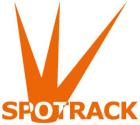TracMe enables any moving light to work as a follow
spot.
When TracMe is in control, the system works out where
the moving lights should point on the stage in relation to
where the operator is pointing on the computer screen.
In real time TracMe calculates Pan-Tilt values to aim the
lights under its control, constantly updating these values
as the operator follows the target.
Where the moving light supports it, TracMe will
automatically shape the beam by calculating Dimmer,
Iris, Zoom and Focus values to keep the beam size,
brightness and sharpness as calibrated.
TracMe technology frees spot operators to concentrate
on what they do best – following. Operators can be
positioned anywhere – including on the ground, whilst
controlling lights anywhere in the show.
A TracMe system consists of a camera*, a computer
with the TracMe software and hardware, and a DMX
interface*.
The camera is positioned to give a full view of the stage.
Live video from the camera is shown on a computer
screen*, allowing the spot operator to follow the performer
with a mouse*.
DMX (via an interface*) Art-Net or sACN of multiple
universes is fed through TracMe to the lights.
TracMe works with any type of moving light, although it
works best with fast lights that can keep up!
Each moving light is calibrated so TracMe knows where
it is relative to the stage. Calibration is quick and easy,
there are no sensors, belt packs, transmitters or receivers
to be setup, calibrated or worn by performers
.
TracMe has a control channel for each light that hands
control of the light to TracMe or takes it back to the desk
for any other use.
TracMe users can define areas to which creative macros
can be applied for effects.
TracMe is extensible if more than one performer must
be followed.


